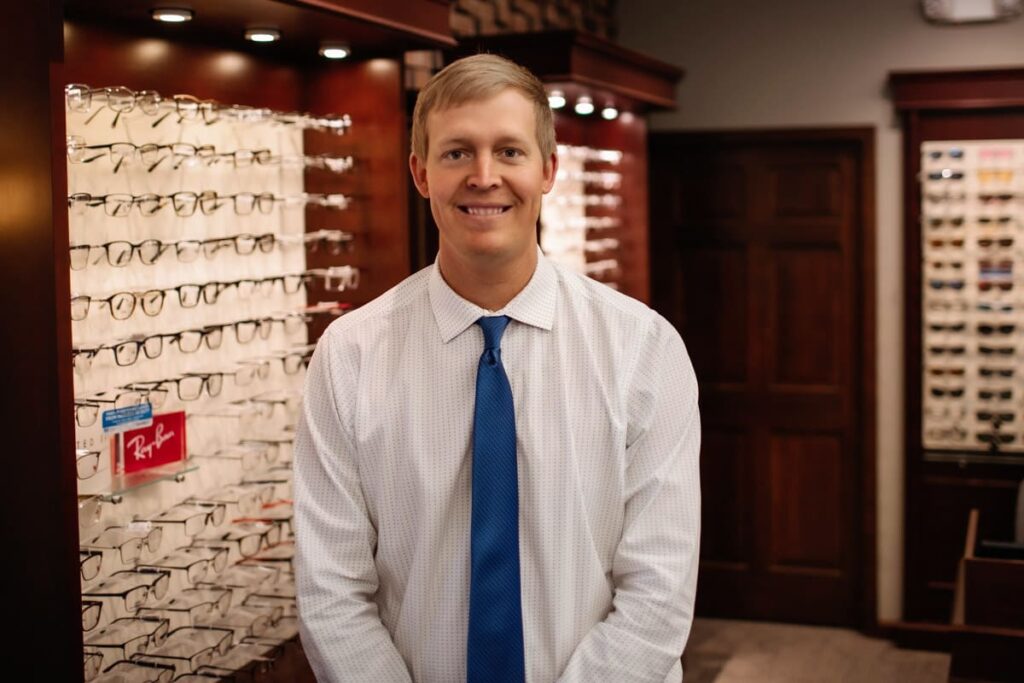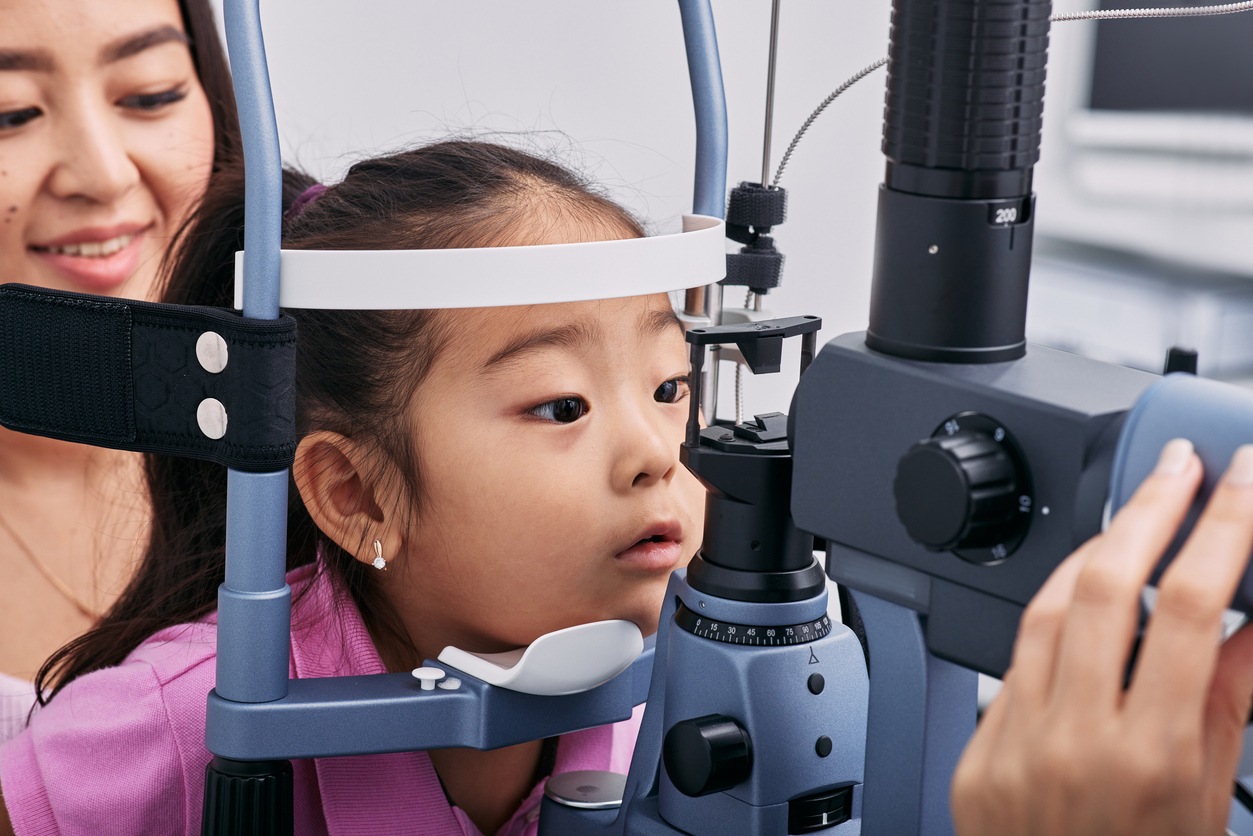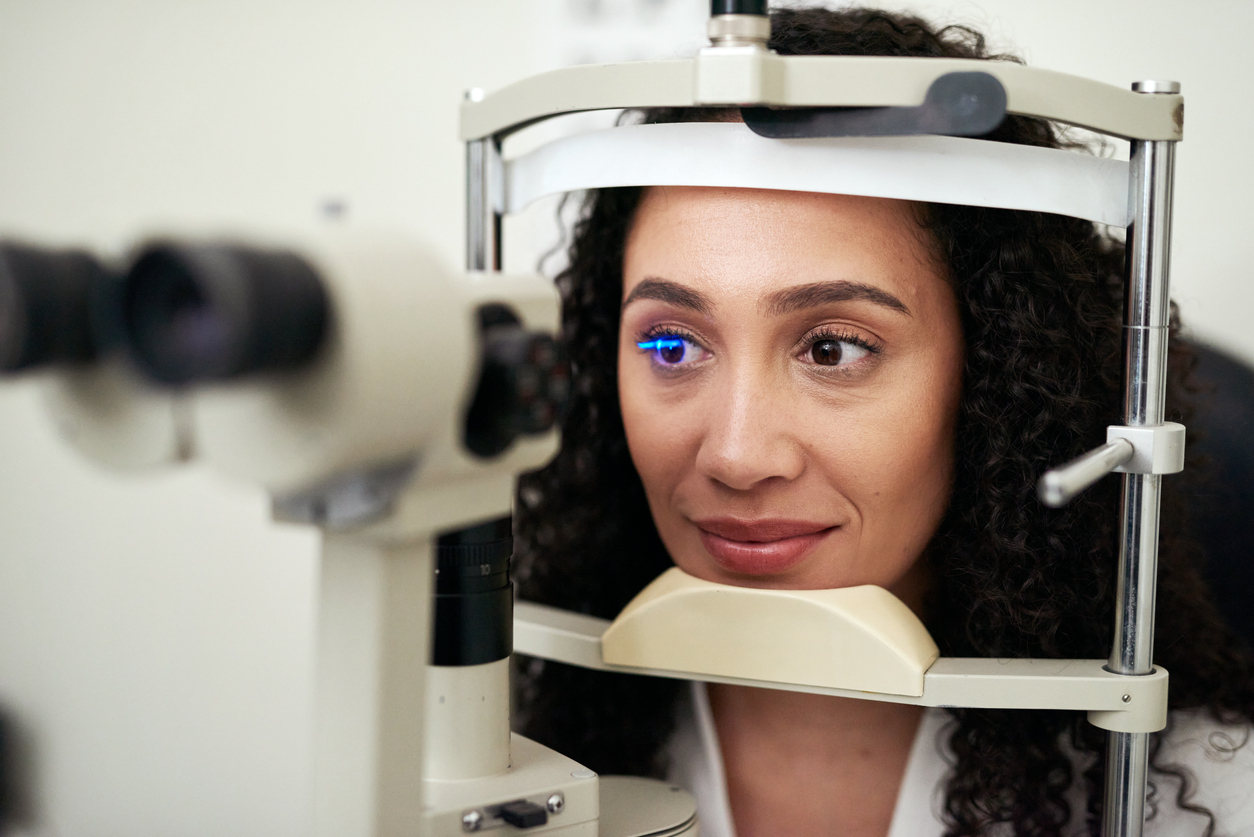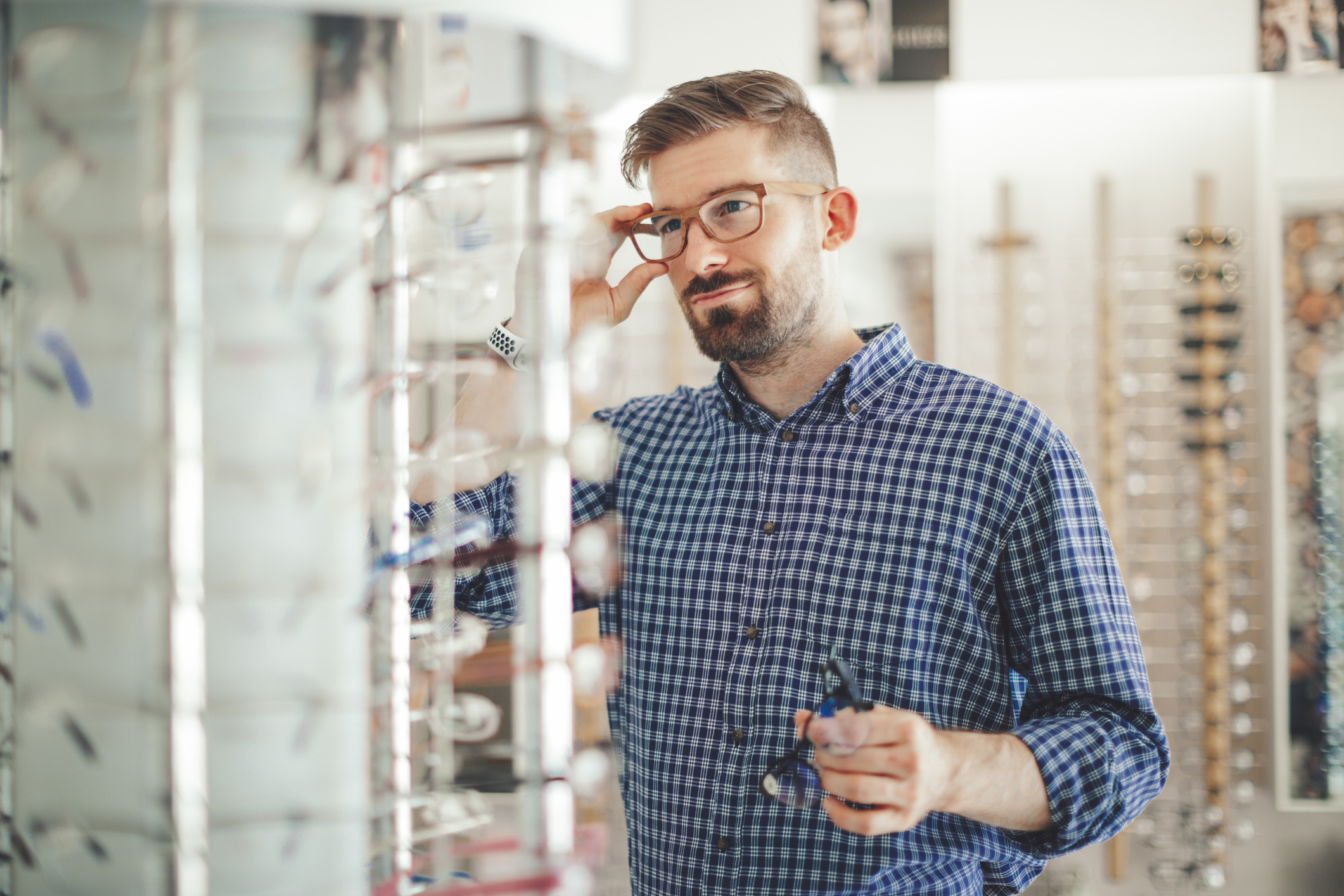As a parent, your little one’s health and well-being are your number one priority. A…
The Impact of Blue Light on Eye Health: What You Should Know
In today’s digital age, you’re exposed to a multitude of screens, from smartphones to laptops, which raises concerns about blue light and eye health. The impact of blue light on vision is a topic that warrants attention, as understanding the potential risks could help preserve your eyesight.
Have you considered the effects of blue light on your eyes during your daily screen time? Below, we’ll provide an in-depth look at the influence of blue light on your ocular well-being. By integrating these insights and recommendations into your lifestyle, you can invest in a clearer, brighter future for your vision.
Continue reading below to learn more about how to protect and enhance your vision in the digital era and how Andover & Winfield Family Optometry can help.

Understanding Blue Light and Its Sources
Our eyes are constantly at the mercy of screens emitting blue light. Consciously or not, you encounter blue light exposure through various means, impacting your daily life. But what exactly is blue light, and where does it come from?
Blue light is a portion of the visible light spectrum, with a wavelength between approximately 380 and 500 nanometers. This high-energy, short-wavelength light is not only vividly bright but also influential in how you perceive the world through your sense of sight.
What Is the Impact of Blue Light On Our Eyes?
Before diving into how exactly blue light affects our eyes, it’s essential to consider how our eyes enable us to see: light hits the retina, stimulating it to send signals to the brain for image processing. Among the spectrum of light reaching our eyes, blue light has a high frequency, which means its energy levels are more intense compared to other colors. This high energy can contribute to glare, which can affect visual clarity and potentially lead to discomfort over time.
The strain you experience after long hours in front of a screen is a signal that your eyes are working hard to cope with the high-energy blue light. This can result in symptoms such as dry eyes, headaches, and blurred vision.
Looking deeper into the effects of our screen-laden environment, it’s not just short-term vision health that’s at stake. An area of growing concern is the potential involvement of blue light and macular degeneration.
Macular degeneration, often age-related, is a degenerative condition that compromises the integrity of the macula. This area of the eye is responsible for capturing fine details, allowing one to read, recognize faces, and drive. As the disease progresses, it can significantly interfere with these vital activities, changing a person’s life dramatically.
Blue Light and Its Effects on Sleep Patterns
As you power up your devices for some evening scrolling or late work hours, it’s crucial to understand the relationship between blue light and sleep. As previously mentioned, blue light, prevalent in the waves of screen light that reach your eyes, can interfere with the natural circadian rhythm, your body’s internal process that regulates the sleep-wake cycle.
So, how exactly does this happen? Exposure to blue light, especially in the hours leading up to bedtime, tricks your brain into thinking it’s still day, suppressing the secretion of melatonin, a hormone that signals your body it’s time to wind down. This disruption can lead to difficulties in falling asleep and prevent you from reaching the deep, restorative stages of sleep, ultimately impacting your overall health.
Common Symptoms of Digital Eye Strain
As you spend hours gazing at digital screens, you may begin to notice certain discomforts that could be telltale symptoms of digital eye strain. Recognizing these symptoms is the first step toward taking corrective action.
- Eye fatigue or tired eyes often signify digital eye strain, leaving you feeling like it’s harder to keep your eyes open and focused.
- Headaches that develop during or after screen usage could be attributed to the intense focus required in digital environments, signifying strain.
- Pain around the eyes or temples, occasionally accompanied by a feeling of pressure, may also be related to prolonged periods of screen time.
- Blurred vision or difficulty maintaining clear sight when looking from your screen to another object could indicate that your eyes are overworked.
- Dry eyes occur when you’re not blinking as frequently while staring at a screen, which is a natural response to digital exposure.
- Redness in the eyes may be an observable sign of irritation from extended interaction with digital devices.
- Neck, shoulder, or back pain can sometimes accompany eye strain due to poor posture or positioning in relation to your screen.
- Increased sensitivity to light, known as photophobia, can develop when your eyes are overexposed to bright screens.
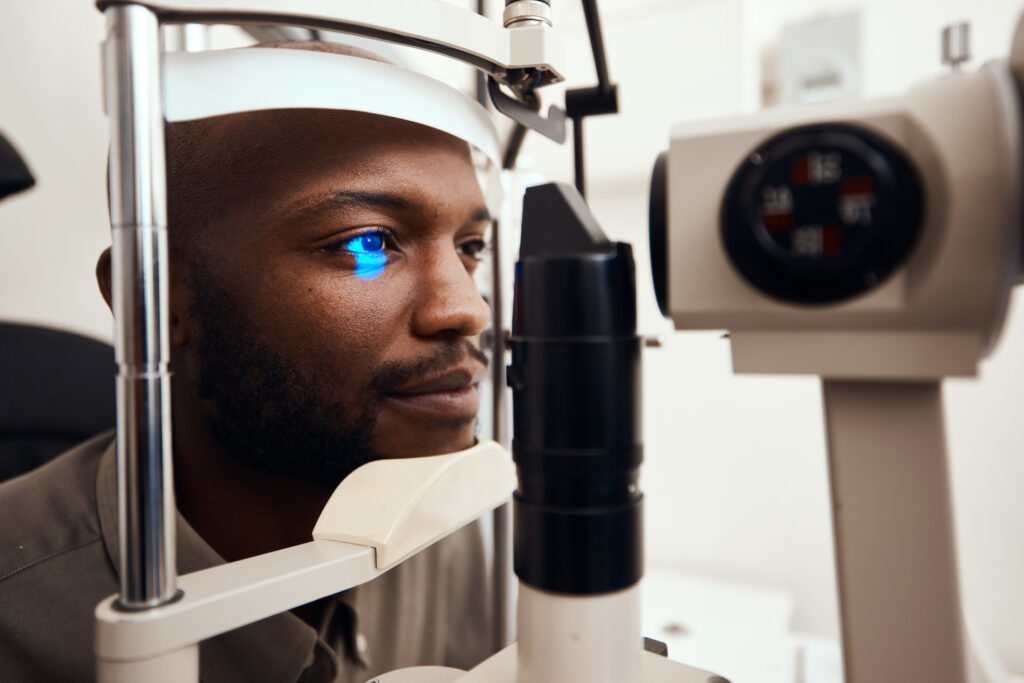
Preventive Measures: Protecting Eyes from Blue Light
It’s pivotal to have strategies in place for protecting eyes from blue light. By adopting some straightforward yet effective strategies, you can significantly reduce blue light exposure. Let’s explore the steps you can take to protect your vision and achieve a healthier screen time balance.
Adjust Screen Settings for Lower Blue Light Emission
One of the simplest adjustments you can make involves the settings on your digital devices. Here’s how:
- Look for built-in features on your devices like “Night Mode” or “Blue Light Filter” to reduce intensity during evening hours.
- Customize your screen brightness to adapt to your environment, dimming in darker spaces to decrease blue light exposure.
- Enable settings that automatically adjust the color temperature based on the time of day, displaying warmer tones when needed.
Maintain a Healthy Screen Time Balance
Equally crucial to adjusting screen settings is managing the amount of time you spend in front of screens. Striking this healthy screen time balance isn’t just vital for your eyes but is also beneficial for your overall well-being, especially in our increasingly digital world.
- Implement the 20-20-20 rule: after 20 minutes of screen time, look at something 20 feet away for at least 20 seconds.
- Set specific ‘no-screen’ periods throughout your day to give your eyes a necessary break.
- Monitor your cumulative screen time using apps or built-in device features to better understand your usage patterns.
- Alternate screen-based activities with physical ones, such as going for a walk or engaging in a hobby off-screen.
Implement a Blue Light Filter
One of the most accessible forms of protection is the blue light filter, a feature that can be activated on most digital devices. This filter diminishes the amount of blue light emitted, which can help minimize the risk of eye strain and disruption to your circadian rhythms. Many operating systems offer built-in options to adjust the color temperature of your screen, especially during evening hours, to alleviate potential harm caused by blue light.
- Learn to navigate your device’s settings to activate the blue light filter.
- Consider using blue light filtering apps that provide greater customization to suit your usage patterns.
- Remember that consistency is vital — make blue light filtering a part of your daily routine to optimize eye protection.
Consider Purchasing Right Blue Light Glasses
When it comes to physical barriers against blue light, blue light glasses have gained popularity. These specialized lenses are designed to block or filter out the blue light given off by screens. However, with a myriad of options available, it’s essential to know how to choose effectively.
- Research various brands to determine which of them use advanced lens technology for maximum protection.
- Look for glasses that block at least 90% of blue light for optimal effectiveness.
- Ensure that the glasses you select have a comfortable fit and a style that you can wear consistently.
By taking these manageable steps, you can foster a viewing environment that is gentler on the eyes, helping to safeguard against the potential risks associated with prolonged exposure to blue light.
Andover & Winfield Family Optometry — Your Path to Clear Vision
The ubiquitous glow of the screens we use on a daily basis poses both challenges and considerations for our eye health. The good news is that actionable strategies and protective measures can be implemented to safeguard against the effects of blue light.
Adopting habits for protecting eyes from blue light is not just cautious but sensible in our technology-saturated times. Whether it’s through the utilization of blue light filters, investing in quality blue light glasses, or managing and balancing screen time, each step contributes to the preservation of vision health.
At Andover & Winfield Family Optometry, we understand that your vision is invaluable. Our dedicated team of experienced optometrists is committed to guiding you through understanding and combating the impacts of blue light on your eyes.
The digital world has brought the challenge of blue light into sharper focus, affecting eye health more than ever before. With personalized care and specialized optometry eye care services, we are here to ensure your eyes remain healthy and vibrant in this digital age.
Don’t let blue light dim the brightness of your world. Reach out to Andover & Winfield Family Optometry today to discover protective measures, advanced screening techniques, and comprehensive eye care tailored just for you. Whether you’re experiencing discomfort or simply seeking preventive measures, our doors are open for consultations, comprehensive eye exams, and personalized advice to better protect your eyesight.
About the Doctor
Dr. Matt Boswell was born and raised in Wichita, Kansas, where he graduated from Kapaun Mt. Carmel High School. He attended Emporia State University to play on the Men’s Basketball Team while getting his Bachelor of Science degree in Biology, Pre-Optometry. While there, Dr. Boswell made the academic honor roll every year while receiving all-league honors his senior year. After graduating from ESU, he went to Memphis, Tennessee, and received his Optometry Degree from the Southern College of Optometry in 2016. Dr. Boswell is excited to practice back in Andover and Winfield, where he was a patient of Dr. Holman’s growing up and shadowed him in high school.
Dr. Boswell’s areas of interest are comprehensive primary eye care and ocular disease, including glaucoma, macular degeneration, cataracts, and diabetes. He also loves fitting contact lenses and seeing kids. He is an active member of the American Optometric Association and the Kansas Optometric Association. Dr. Boswell resides in East Wichita with his wife, Kirsten, a nurse. They welcomed their first child in February 2022, Baker. They love the outdoors, playing sports, fishing, and staying active with their Bernese Mountain Dog, Franny.
